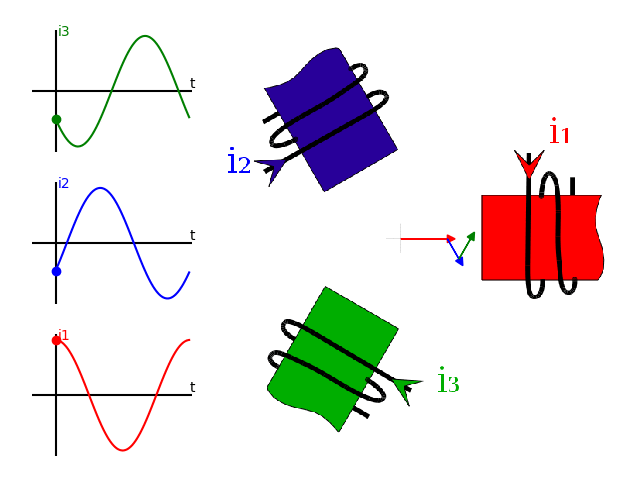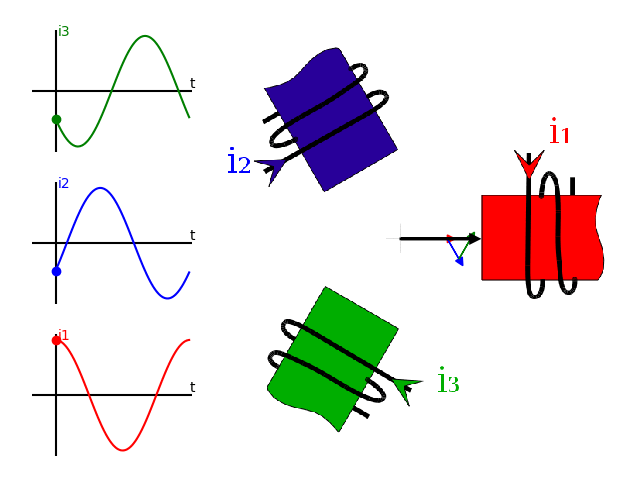Creating a rotating magnetic field
There are no JavaScript simulations on this page. The figures presented are animated .gifs created from a script in python, and an background image. The original version of this script is from Josh Lifton (2004). Curves and arrows are plotted using the Matplotlib library.A rotating magnetic field can be created using three windings, spaced 120° degrees apart, and powered by balanced three-phase currents. FIG. 1 schematically represents these three windings. In figure 1a, only the first phase (red) is energized. In figure 1b, only the second phase (blue) is energized. Finally, in figure 1c, phase 3 (green) is energized.
 (a)
(a) (b)
(b) (c)
(c)In figure 2, the three coils are supplied by three-phase currents, with a phase difference of 120° between each. The vectors representing the magnetic fields are plotted separately in Figure 2a. They are placed end-to-end in Figure 2b. Finally, in Figure 2c, the sum of the three vectors is shown in black. This sum corresponds to the extremity of the three vectors placed end-to-end. The black arrow therefore represents the resulting magnetic field obtained by energizing the three coils. This resulting field can:
- spin a permanent magnet (principle of synchronous motors);
- induce an electromotive force in a coil;
- spin a short-circuited winding (principle of induction motors).
 (a)
(a) (b)
(b) (c)
(c)